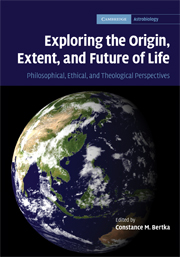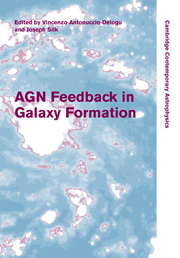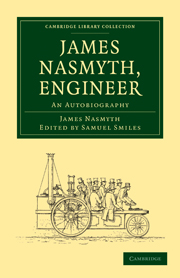Refine listing
Actions for selected content:
16950 results
16 - Energetic constraints on prebiotic pathways: application to the emergence of translation
- from Part IV - From non-living systems to life
-
-
- Book:
- Origins and Evolution of Life
- Published online:
- 04 February 2011
- Print publication:
- 06 January 2011, pp 247-258
-
- Chapter
- Export citation
Part V - Mechanisms for life evolution
-
- Book:
- Origins and Evolution of Life
- Published online:
- 04 February 2011
- Print publication:
- 06 January 2011, pp 289-290
-
- Chapter
- Export citation
25 - Early life: nature, distribution and evolution
- from Part VII - Traces of life and biosignatures
-
-
- Book:
- Origins and Evolution of Life
- Published online:
- 04 February 2011
- Print publication:
- 06 January 2011, pp 391-413
-
- Chapter
- Export citation
13 - Liquid water: a necessary condition for all forms of life?
- from Part III - The role of water in the emergence of life
-
-
- Book:
- Origins and Evolution of Life
- Published online:
- 04 February 2011
- Print publication:
- 06 January 2011, pp 205-217
-
- Chapter
- Export citation
2 - Atomic structure
-
- Book:
- Atomic Astrophysics and Spectroscopy
- Published online:
- 05 June 2012
- Print publication:
- 06 January 2011, pp 15-45
-
- Chapter
- Export citation

Exploring the Origin, Extent, and Future of Life
- Philosophical, Ethical and Theological Perspectives
-
- Published online:
- 29 December 2010
- Print publication:
- 03 September 2009
References
-
- Book:
- Canonical Gravity and Applications
- Published online:
- 05 August 2012
- Print publication:
- 23 December 2010, pp 289-299
-
- Chapter
- Export citation
2 - Isotropic cosmology: a prelude
-
- Book:
- Canonical Gravity and Applications
- Published online:
- 05 August 2012
- Print publication:
- 23 December 2010, pp 4-16
-
- Chapter
- Export citation
3 - Hamiltonian formulation of general relativity
-
- Book:
- Canonical Gravity and Applications
- Published online:
- 05 August 2012
- Print publication:
- 23 December 2010, pp 17-112
-
- Chapter
- Export citation
4 - Model systems and perturbations
-
- Book:
- Canonical Gravity and Applications
- Published online:
- 05 August 2012
- Print publication:
- 23 December 2010, pp 113-183
-
- Chapter
- Export citation
Frontmatter
-
- Book:
- Canonical Gravity and Applications
- Published online:
- 05 August 2012
- Print publication:
- 23 December 2010, pp i-iv
-
- Chapter
- Export citation
6 - Quantum gravity
-
- Book:
- Canonical Gravity and Applications
- Published online:
- 05 August 2012
- Print publication:
- 23 December 2010, pp 248-273
-
- Chapter
- Export citation
1 - Introduction
-
- Book:
- Canonical Gravity and Applications
- Published online:
- 05 August 2012
- Print publication:
- 23 December 2010, pp 1-3
-
- Chapter
- Export citation
Appendix A - Some mathematical methods
-
- Book:
- Canonical Gravity and Applications
- Published online:
- 05 August 2012
- Print publication:
- 23 December 2010, pp 274-288
-
- Chapter
- Export citation
5 - Global and asymptotic properties
-
- Book:
- Canonical Gravity and Applications
- Published online:
- 05 August 2012
- Print publication:
- 23 December 2010, pp 184-247
-
- Chapter
- Export citation
Index
-
- Book:
- Canonical Gravity and Applications
- Published online:
- 05 August 2012
- Print publication:
- 23 December 2010, pp 300-305
-
- Chapter
- Export citation
Contents
-
- Book:
- Canonical Gravity and Applications
- Published online:
- 05 August 2012
- Print publication:
- 23 December 2010, pp v-vi
-
- Chapter
- Export citation

Instabilities in Space and Laboratory Plasmas
-
- Published online:
- 06 December 2010
- Print publication:
- 14 August 1986

AGN Feedback in Galaxy Formation
-
- Published online:
- 10 November 2010
- Print publication:
- 28 October 2010

James Nasmyth, Engineer
- An Autobiography
-
- Published online:
- 10 November 2010
- Print publication:
- 10 June 2010
- First published in:
- 1883
